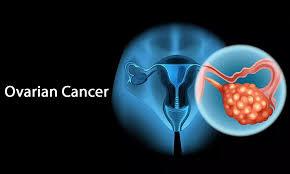
Bone cancer is a rare but serious condition that can affect any bone in the body, including the femur. Understanding bone cancer of the femur, its causes, symptoms, and treatment options is crucial for early detection and proper management of the disease.
The femur, also known as the thigh bone, is the longest and strongest bone in the human body. It plays a vital role in walking, running, and other weight-bearing activities. Bone cancer of the femur can significantly impact a person’s mobility and overall quality of life. Therefore, it is important to be aware of the signs and symptoms of this condition and seek medical attention if necessary.
Causes of Bone Cancer of the Femur
The exact cause of bone cancer is not fully understood. However, several risk factors have been identified that may increase the likelihood of developing the disease. These risk factors include:
• Age: Bone cancer is more common in children and young adults, although it can occur at any age.
• Gender: Males are more likely to develop bone cancer than females.
• Genetics: Certain genetic conditions, such as Li-Fraumeni syndrome and hereditary retinoblastoma, increase the risk of bone cancer.
• Previous radiation therapy: Previous exposure to radiation therapy for other conditions may increase the risk of developing bone cancer.
• Paget’s disease of bone: This condition, which causes the bones to become weaker and more prone to fractures, may increase the risk of developing bone cancer.
Symptoms of Bone Cancer of the Femur
The symptoms of bone cancer can vary depending on the location and size of the tumor. In the case of bone cancer of the femur, the following symptoms may be present:
• Bone pain: Persistent, deep bone pain that gets worse at night or with activity.
• Swelling: Swelling or a lump in the affected area.
• Fractures: Increased risk of bone fractures, particularly in the upper part of the femur.
• Weakness or numbness: Weakness or numbness in the affected limb.
• Unexplained weight loss: Weight loss without a clear cause.
It is important to note that these symptoms can be caused by conditions other than bone cancer. However, if you experience any of these symptoms, it is essential to seek medical attention for a proper diagnosis.
Diagnosis of Bone Cancer of the Femur
Diagnosing bone cancer of the femur typically involves a combination of imaging tests, such as X-rays, CT scans, MRI scans, and bone scans, as well as a biopsy to confirm the presence of cancer cells. A thorough physical examination and a detailed medical history are also essential in making an accurate diagnosis.
Treatment Options for Bone Cancer of the Femur
The treatment of bone cancer of the femur depends on several factors, including the type and stage of the cancer, as well as the overall health and preferences of the patient. Treatment options may include:
Surgery: The primary treatment for bone cancer is surgery to remove the tumor and a margin of healthy tissue surrounding the tumor. In some cases, the entire femur may need to be removed and replaced with a prosthetic implant in a procedure known as limb-salvage surgery. Amputation may be necessary in rare cases where the cancer has spread extensively.
Chemotherapy: Chemotherapy may be recommended before or after surgery to kill any remaining cancer cells and reduce the risk of the cancer returning. Chemotherapy may also be used to shrink the tumor before surgery.
Radiation therapy: Radiation therapy uses high-energy beams to destroy cancer cells. It may be used in combination with surgery or chemotherapy to treat bone cancer of the femur.
Targeted therapy: This type of therapy uses drugs that specifically target the cancer cells, while minimizing damage to healthy cells. Targeted therapy may be used in combination with other treatments for bone cancer.
Clinical trials: Participation in clinical trials may be an option for some patients with bone cancer of the femur. Clinical trials test new treatments and therapies to improve the outcomes for patients with bone cancer.
Pain management: Palliative care may be recommended to help manage pain and improve the quality of life for patients with advanced bone cancer.
In addition to these treatments, a multidisciplinary approach involving a team of healthcare professionals, including orthopedic surgeons, medical oncologists, radiation oncologists, and physical therapists, is essential for the comprehensive management of bone cancer of the femur.
Conclusion
Bone cancer of the femur is a rare but potentially life-threatening condition that requires prompt diagnosis and appropriate treatment. Understanding the causes, symptoms, and treatment options for bone cancer of the femur is crucial for early detection and improved outcomes. If you experience any symptoms that may indicate bone cancer, it is important to seek medical attention for further evaluation. With advances in medical technology and treatment options, the prognosis for bone cancer of the femur has improved, and many patients are able to achieve long-term remission and improved quality of life with proper management.












